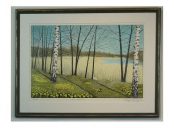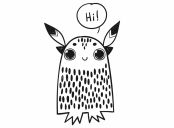Stockholm Konst: Unleashing the Creative Spirit of the Capital

Introduction:
Stockholm, the vibrant capital of Sweden, is not only known for its rich history, stunning architecture, and cultural heritage but also for its thriving art scene. The city is a hub for artists, galleries, museums, and exhibitions, making it a paradise for art lovers. In this article, we will delve into the world of ”Stockholm Konst” and explore its various facets, popular art forms, historical significance, and how they differentiate from one another.
I. An Overview of Stockholm Konst

Stockholm Konst is a term that encompasses the wide array of artistic expressions found in Stockholm. From contemporary art to classical masterpieces, the city offers a diverse range of artistic experiences. With its numerous art institutions, galleries, and public installations, Stockholm has become a melting pot of creativity, attracting both local and international artists.
II. Exploring the Different Types of Stockholm Konst
1. Contemporary Art: Stockholm boasts an impressive contemporary art scene, with its numerous galleries showcasing the works of emerging and established artists. From paintings, sculptures, and installations to video art and performance, contemporary art in Stockholm pushes the boundaries of creativity and challenges traditional norms.
2. Street Art: One cannot explore Stockholm’s art scene without acknowledging the vibrant street art culture. Bold murals, graffiti, and stenciled works can be found throughout the city, breathing life into its urban landscapes. Artists such as Banksy, Brusk, and Joakim Stampe have left their mark on Stockholm’s streets, adding to its artistic allure.
3. Classical and Historical Art: Stockholm also houses an impressive collection of classical and historical art. The National Museum, Moderna Museet, and the Royal Palace are home to exquisite paintings, sculptures, and artifacts that showcase the rich cultural heritage of Sweden. These art forms allow visitors to delve into the city’s past and witness the evolution of artistic expression over the centuries.
III. Quantitative Measurements of Stockholm Konst
Quantifying the impact of art can be challenging; however, Stockholm provides some notable metrics to gauge the significance of its art scene:
1. Number of Art Institutions: Stockholm boasts a plethora of art institutions, including the Nationalmuseum, Moderna Museet, and Fotografiska. These institutions attract millions of visitors each year, contributing to the city’s cultural and economic growth.
2. Economic Impact: Stockholm’s art sector generates substantial revenue for the city. From art sales, tourism, and cultural events, the art scene contributes to the local economy, creating job opportunities and fostering cultural exchange.
IV. Differentiating Stockholm Konst
Each type of Stockholm Konst has its unique characteristics that set it apart from the others:
1. Contemporary Art vs. Classical Art: The contemporary art scene is often characterized by experimentation, innovation, and a reflection of the present societal issues. Classical art, on the other hand, focuses on preserving traditions, capturing beauty, and showcasing historical narratives. The juxtaposition of these two art forms creates a dynamic and diverse cultural landscape in Stockholm.
2. Street Art vs. Institutional Art: Street art, by its nature, challenges the conventional art world and aims to engage the public in unanticipated locations. Institutional art, found in museums and galleries, provides a curated experience for visitors to appreciate art in a more traditional setting. Both forms contribute to the vibrant art scene of Stockholm, providing different perspectives and experiences.
V. Historical Overview of Advantages and Disadvantages of Stockholm Konst
Throughout history, Stockholm Konst has had its share of advantages and disadvantages:
1. Advantages: Stockholm’s art scene has led to an increased sense of cultural identity, fostering creativity, and promoting social dialogue. It has also attracted tourists, contributed to urban revitalization, and provided opportunities for artists to flourish in their craft.
2. Disadvantages: Some critics argue that the increasing commercialization of art in Stockholm has led to a focus on profit rather than artistic integrity. Additionally, the exclusion of certain art forms or marginalized artists has been a persistent issue, prompting a call for more inclusivity within the Stockholm Konst community.
In conclusion, Stockholm Konst offers a captivating journey into the world of art that ranges from contemporary masterpieces to historical treasures. With its diverse array of artistic expressions, Stockholm continues to inspire, challenge, and redefine the boundaries of creativity. From street art to classical masterpieces, Stockholm’s art scene is a testament to the city’s rich cultural heritage and its commitment to nurturing the creative spirit. So, immerse yourself in the captivating world of Stockholm Konst and discover the artistic wonders that await you in the Swedish capital.





















